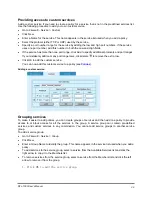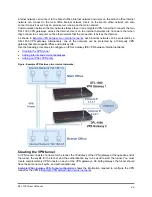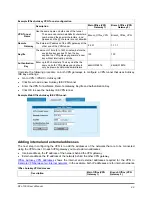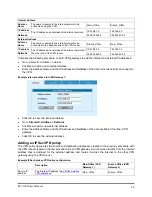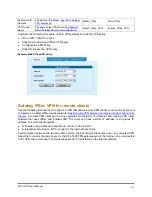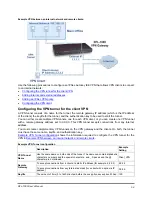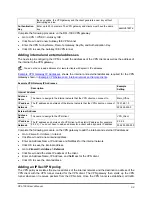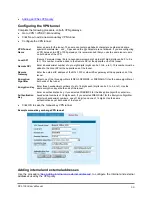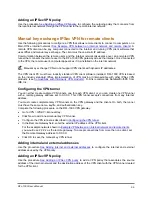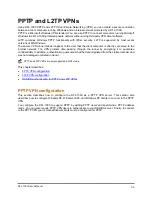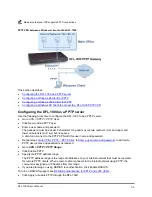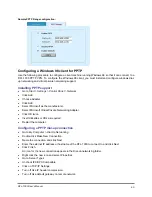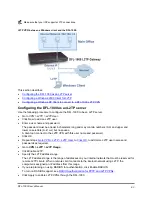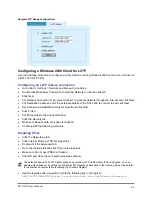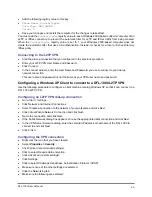
Destination IP
Address
The External IP address (
).
Branch_Office Main_Office
VPN Tunnel
Name
The name of the VPN tunnel (
IPSec Autokey VPN Tunnel configuration
Branch_Office_VPN Branch_Office_VPN
Complete the following procedure on both VPN gateways to add the VPN policy:
•
Go to
VPN > IPSEC > Policy
.
•
Click New to add a new IPSec VPN policy.
•
Configure the VPN Policy.
•
Click OK to save the VPN policy.
Example Main Office VPN policy:
Autokey IPSec VPN for remote clients
Use the following procedures to configure a VPN that allows remote VPN clients to connect to users and
computers on a Main Office internal network (
See Example VPN between an internal network and remote
). A remote VPN client can be any computer connected to the Internet and running VPN client
software that uses IPSec and Autokey IKE. The client can have a static IP address or a dynamic IP
address. A remote client could be:
•
A traveller using a dial-up connection to connect to the Internet
•
A telecommuter using an ISP to connect to the Internet from home
Communication between the remote users and the internal network takes place over an encrypted VPN
tunnel that connects the remote user to the DFL-1000 VPN gateway across the Internet. Once connected
to the VPN, the remote user's computer appears as if it is installed on the internal network.
DFL-1000 User’s Manual
51



